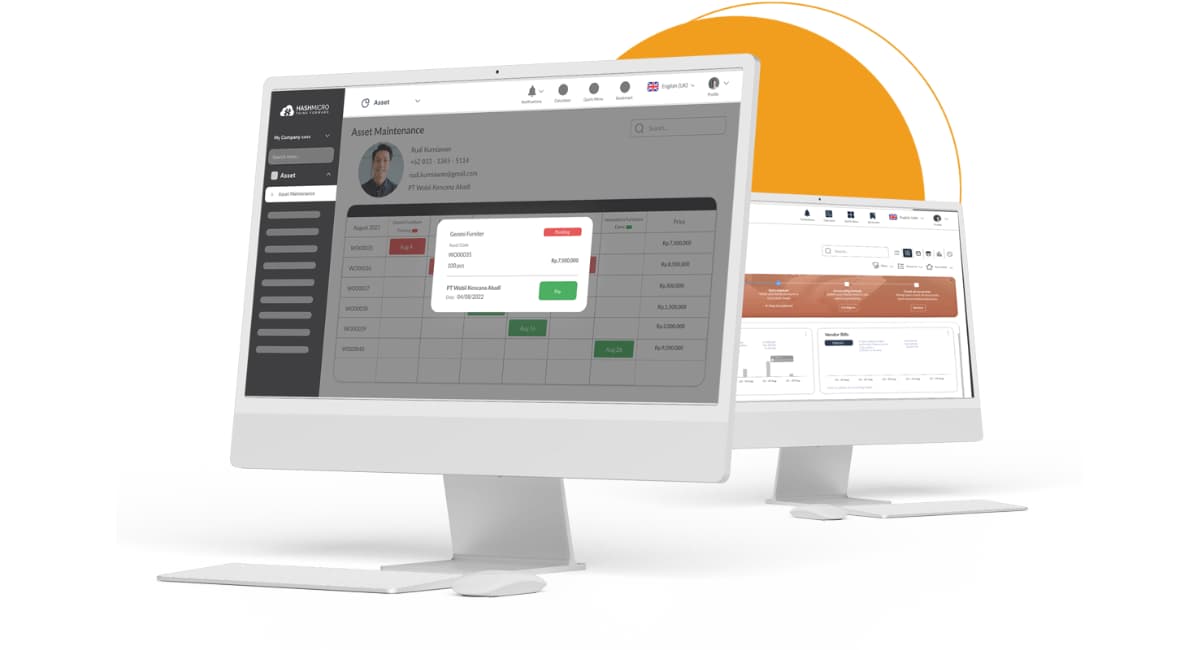Asset Performance Management (APM) has become a cornerstone for organizations seeking to maximize the efficiency and longevity of their assets. In an era where operational downtime can have significant financial repercussions, effective APM ensures that assets are running at peak performance while minimizing disruptions.
By integrating advanced technologies, predictive analytics, and robust maintenance strategies, businesses can proactively address asset issues before they escalate into costly problems.
This article explores the definition of APM, its key components, and how they contribute to a more resilient and cost-effective asset management approach.
Table of Content:
Table of Content
Key Takeaways
|
Understanding Asset Performance Management (APM)
Asset Performance Management (APM) is a comprehensive approach to monitor, analyze, and optimize the performance of assets in industries. With the objective of maximizing the reliability, availability, and efficiency of assets, APM goes beyond traditional asset management strategies to minimize operational risks and costs.
APM emphasizes proactive maintenance, predictive analytics, and real-time monitoring using advanced technologies, making asset performance visible and measurable. By leveraging APM, businesses can make data-driven decisions to optimize asset performance and drive operational excellence.
APM encompasses various components such as predictive maintenance, reliability-centered maintenance, and asset health monitoring. Predictive maintenance utilizes advanced analytics and AI to predict equipment failure, enabling businesses to schedule maintenance proactively.
Reliability-centered maintenance focuses on identifying critical assets and developing maintenance strategies based on their importance and risk levels.
Asset health monitoring involves real-time monitoring of asset condition using sensors and IoT technology. This allows businesses to detect potential issues and take prompt actions to prevent failures and optimize performance.
By implementing APM strategies, businesses can achieve the objective of performance optimization of assets. APM not only improves asset performance but also helps in reducing downtime, increasing productivity, and minimizing maintenance costs. It provides businesses with a competitive edge by ensuring operational efficiency and compliance with regulatory requirements.
Through the integration of APM, businesses in Singapore can enhance their operational excellence and stay ahead in the dynamic industrial landscape.
The Imperative for APM in Singapore
Singaporean industries face unique challenges that necessitate the adoption of Asset Performance Management (APM). These challenges include high operational costs, stringent regulatory requirements, and the need for sustainability.
APM provides solutions to address these challenges by optimizing asset performance, reducing maintenance costs, and ensuring compliance with regulations. By implementing APM strategies, businesses in Singapore can improve operational efficiency, minimize downtime, and enhance their competitive advantage in the global market.
Core Components of APM
Asset Performance Management (APM) is a comprehensive approach that utilizes various core components to optimize asset performance and drive operational efficiency. These components play a critical role in ensuring the reliability, availability, and efficiency of assets in industries.
1. Predictive maintenance
Predictive maintenance is a key component of APM that leverages advanced analytics and artificial intelligence (AI) to predict equipment asset management failure and schedule maintenance proactively. By analyzing historical data and real-time sensor inputs, businesses can detect early signs of asset deterioration and take preventive measures to avoid costly downtime.
Predictive maintenance helps optimize maintenance schedules, extend asset lifespan, and minimize unplanned breakdowns, ultimately enhancing overall asset reliability.
2. Reliability-centered maintenance
Reliability-centered maintenance focuses on identifying critical assets and developing maintenance strategies based on their importance and risk levels. This component involves analyzing asset failure patterns, considering operational requirements, and establishing maintenance plans that maximize asset performance and minimize costs.
By prioritizing maintenance efforts on critical assets, businesses can allocate resources effectively and ensure the continuous availability of key production equipment.
3. Asset health monitoring
Asset health monitoring is a real-time monitoring component that utilizes sensors and Internet of Things (IoT) technology to track asset condition. By continuously monitoring asset health parameters such as vibration, temperature, and pressure, businesses can identify potential issues and proactively address maintenance needs.
Real-time monitoring enables timely intervention, reduces the risk of unexpected failures, and optimizes asset performance.
4. Industrial IoT (IIoT) and analytics
The role of Industrial IoT (IIoT) and analytics is crucial in enabling proactive asset management strategies within APM. IIoT facilitates the collection of vast amounts of data from various sensors and devices deployed across the plant, while analytics processes this data and generates actionable insights.
By applying advanced analytics techniques such as machine learning and predictive analytics, businesses can gain valuable insights into asset performance trends, identify optimization opportunities, and make data-driven decisions for proactive asset management.
All these components are available in HashMicro‘s Asset Management Software. If you’re interested with our system and want to know more about the budget for the implementation, you may download our pricing scheme by clicking the banner down below.
The Strategic Advantages of Implementing APM
Implementing Asset Performance Management (APM) offers significant strategic advantages for businesses in Singapore. APM enables cost reduction by optimizing asset performance and minimizing maintenance costs.
By implementing proactive maintenance strategies and leveraging advanced technologies like predictive analytics, businesses can identify potential issues before they escalate, reducing the frequency and severity of equipment failures. This not only saves on repair costs but also minimizes the disruption caused by unplanned downtime.
Another key advantage of APM is the enhanced asset life cycle. Timely maintenance, based on real-time asset health monitoring and predictive analytics, helps extend the lifespan of critical assets. By ensuring that assets operate within optimal parameters, businesses can maximize their productivity and efficiency while minimizing the risk of premature failure.
Improved safety is also a significant benefit of APM. By continuously monitoring asset performance and analyzing data from sensors and IoT devices, businesses can identify potential safety hazards and take proactive measures to mitigate risks. This enhances workplace safety, reduces the likelihood of accidents, and protects the well-being of employees.
In addition, APM helps businesses achieve compliance with environmental standards. By optimizing asset performance and minimizing energy consumption, businesses can reduce their environmental footprint.
APM technologies enable real-time monitoring of environmental parameters and provide actionable insights for improving sustainability practices. By aligning with environmental regulations and adopting eco-friendly approaches, businesses can enhance their reputation and contribute to a greener future.
Optimize Your Assets’s Lifespan with HashMicro’s Asset Management System
HashMicro’s Asset Management Software offers a comprehensive approach to asset performance management, designed to optimize asset reliability and operational efficiency. It combines advanced features with a user-friendly interface to streamline asset-related tasks and improve overall asset performance.
Let’s delve into the core features that make this system a compelling solution for businesses seeking to enhance their asset management processes.
- Asset tracking: This feature letting businesses monitor assets’ location, status, and movement in real-time. Using barcode scanning, RFID, or GPS, it provides accurate tracking to prevent asset loss or misplacement.
- Maintenance scheduling: Our system helps reduce unexpected downtime and prolongs asset lifespan by ensuring maintenance is done at the right times. It also generates automatic alerts and notifications to remind maintenance teams about upcoming tasks.
- Depreciation calculation: This feature automates asset depreciation, following accounting standards. It offers accurate, timely reports to help businesses stay compliant and plan for asset replacement or disposal.
- Asset lifecycle management: HashMicro’s system offers tools to manage the whole lifecycle, letting businesses track asset performance, schedule maintenance, and plan for renewal or disposal.
- Reporting and analytics: This feature has customizable reports that let businesses analyze maintenance costs, asset utilization, and overall performance. The analytics tools help users spot trends, identify issues, and make data-driven decisions to enhance asset management.
Overall, HashMicro’s asset management system provides a robust solution for effective asset performance management. With its advanced tracking, maintenance scheduling, depreciation calculation, lifecycle management, and comprehensive reporting, businesses can optimize asset performance, reduce costs, and ensure operational excellence.
Conclusion
Asset Performance Management (APM) is an essential strategy for businesses seeking to maximize the efficiency and reliability of their assets. By incorporating core components like predictive maintenance, reliability-centered maintenance, and real-time asset health monitoring, APM reduces downtime and maintenance costs while extending asset lifespans.
The benefits of APM are clear: improved operational efficiency, enhanced safety, and compliance with environmental standards. To achieve these outcomes, adopting a robust asset management software solution is crucial.
HashMicro’s Asset Management System offers a comprehensive suite of tools designed to optimize asset performance, streamline maintenance, and provide valuable insights through advanced analytics.
To experience these benefits firsthand, we invite you to try HashMicro’s asset management system with a free demo. Discover how this solution can transform your asset management approach and help your business achieve operational excellence.






































